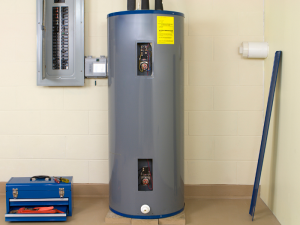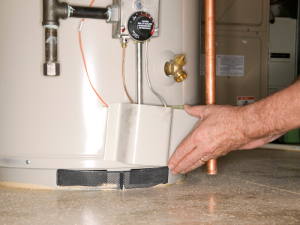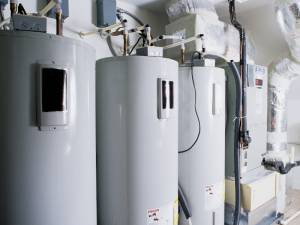One of the most frequently used features in our homes is our water fixtures. More often than not, we use the water we are supplied with to cook and clean, letting all sorts of debris and food grime go down the drain once we’ve done with the waste water. It’s only natural that, eventually, the wear and tear takes a toll and grime builds up and affects our homes’ plumbing systems.
One such way this can happen is when scale buildup forms inside the pipes.
Scale has been frequently related to water heaters and other equipment getting damaged and clogging up pipes and faucets.
It can even create discoloration in your shower’s tiles, effectively making scale buildup harder to clean.
Getting rid of these scale deposits before they actually cause damage to your pipes and faucets is incredibly important.
In order to help you efficiently clean any scale deposits that you might find around your home, we’ve put together this article as help. In areas like your shower and sinks, you can easily clean them out yourself. But when it comes to dealing with any scale buildup in your pipes, it’s a good idea to call Clover Contracting for help.
What is scale build up and why is it an issue for homeowners?
If you’ve ever cleaned up a tub or a pool, there’s a high chance you’ve come across scale buildup, or at the very least, the discoloration that comes before the buildup. Simply put, scale is what typically gets formed when soap and bits of dirt and other materials mix together with the minerals in water. Some of the water many homes are supplied with already has some degree of minerals in it, though not as much as there is in hard water.
As a result, quite a lot of scale build ups happen due to having hard water in your home’s location. The hard water itself often contains higher levels of calcium, carbonate, magnesium and other minerals. So, when your family simply uses the water, more soap and other materials are mixed together to form scale buildup in pipes and sinks.
Signs you have hard water in your area
While hard water is particularly good for the people in your family, it isn’t the best for your house and its fixtures. If you aren’t sure if you have hard water, check to see if you have white films over certain surfaces, like tiles, porcelain and any fiberglass or regular glass. You might also be able to find mineral deposits or stains around your bathroom faucets or your lighter colored dishes.
If you have water with a lot of minerals in it, your stains might vary in color as well. While calcium and magnesium are the most common minerals in hard water, you can also find manganese, iron and trace particles of brass and copper.
Any manganese stains tend to look dark, typically brown or black. Iron rich water can leave behind red or white slimy looking deposits while blue or green stains can mean that the slight acidity in the water is wearing away brass or copper pipes.
These deposits should be easy to clean, given that they’re noticed ahead of time. If you’re worried about how hard your water is, take into consideration the pros and cons. If you find that you end up cleaning these deposits off way more often than you gain the benefits, invest in a water softener
Cleaning out scale deposits in your home
Scale deposits can be found anywhere, though they’re much easier to find in your bathroom. The lighter colors of the porcelain and other materials there are likely the first place you would notice any discolorations and would be cleaned first.
Cleaning scale buildup from porcelain sinks
When it comes to cleaning any scale buildup from your bathroom’s sink, one of the best ideas is to use a mixture of baking soda and vinegar. After giving the sink a quick clean to get rid of any lingering dirt with warm water and some soap, mix together one part vinegar with two parts baking soda. Rub the paste into the hard water scale stains and wait roughly five minutes before scrubbing at it with a soft sponge. Once the paste has been removed, dry the sink.
Remove scale from a toilet
Much like with a porcelain sink, you can clean the scale deposits out of your toilet with a good amount of vinegar. Before you do start, however, make sure to use protective gloves and empty the bowl first. Once the water is low enough that the vinegar won’t get diluted right away, pour some undiluted vinegar over the deposits and leave it for a few hours to soften the scaling. Then simply scrub with a toilet brush and flush it away.
Removing scale from glass and your shower
Much like removing scale buildup from toilets, the only ingredient you need is vinegar. In order to remove the scale, simply mix equal parts of water and white vinegar and spray it onto the deposits. Let it sit for about ten minutes before wiping it off and rinsing the door. You can also use this same mixture on your tiles or showerhead!
Dealing with scale in water pipes
Depending on how deep the scale is in your home’s plumbing system, you may need to call a plumber. There are ways you can try to clean off the deposits if you think it’s higher up towards your drains.
Like cleaning your sink, all you need is baking soda, vinegar and hot water. To start, pour half a cup of baking soda and half a cup of vinegar into the opened drain. Cover the drain with a rag and let it sit for five minutes before boiling water and pouring it into the drain. If you want to clean the drain’s stopper, you can put some vinegar onto a soft sponge and wipe it down. The mixture should eat away any buildup that’s in the piping.
Takeaway
If you’re faced with any particularly stubborn scale deposits and no homemade mixture seems to solve the issue, you can always try a commercial cleaner instead. They frequently have stronger, more acidic chemicals in it, allowing it to eat away at the buildup. Of course, avoid using the commercial cleaners on any surface your food will come into contact with.
However, if scale buildup still seems to be an issue even after you’ve used both homemade and commercial cleaners, it’s time you call Clover Contracting for help.




